1900
George Eastman introduces the 'Brownie' camera. Simple in design and inexpensive to buy, this camera heralds the concept of taking snapshots.
George Eastman introduces the 'Brownie' camera. Simple in design and inexpensive to buy, this camera heralds the concept of taking snapshots.
The population of Las Vegas, the United States’ most popular gaming cities, is just 22!
The Prinzessin Victoria Louise is built exclusively for luxury cruising; the first of its kind. She is designed by general manager of Hamburg-America Line, Albert Ballin.
The Polytechnic Touring Association emerges as an organisation within the Polytechnic, offering cheaper travel to less affluent customers.
America has fewer than 10,000 hotels across the country.
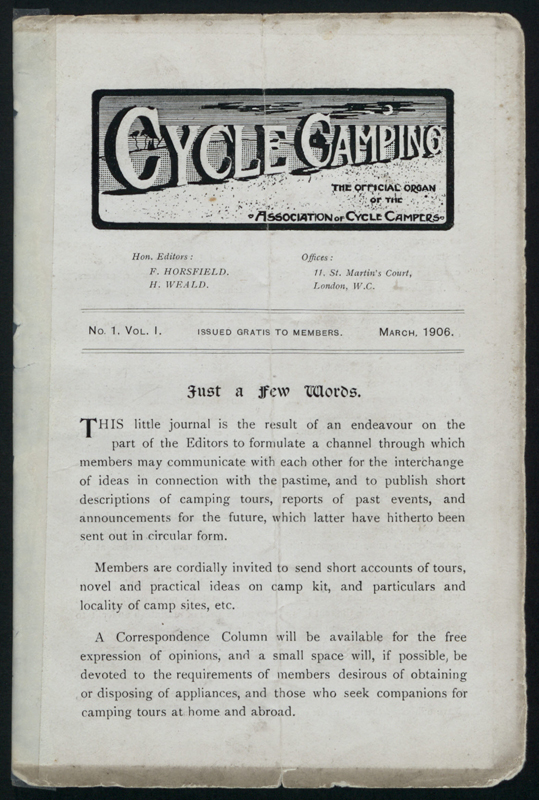
Thomas Hiram Holding forms the world's first camping club, the Association of Cycle Campers. This eventually becomes the Camping and Caravanning Club.
New Zealand becomes the first country to officially dedicate a government department to tourism. The 'Department of Tourist and Health Resorts' is born.
![[Front Cover - The Excursionist, No.4 May 3, 1904]](media/tca_n_excursionist_1902_0086.jpg)
The Thomas Cook Excursionist periodical, which has published details of trips offered and advertisements for hotels, clothing and transport since 1851, publishes its last issue. It is replaced by the Traveller's Gazette magazine, which publishes until 1939.
Leap-the-Dips, the world’s oldest operating roller coaster, is built at Lakemont Park, Altoona.
Crater Lake National Park is established in Oregon, USA.
Captain Robert Falcon Scott becomes the first explorer to see the dry valleys of the Arctic.
Henry Lunn organises the first winter sports package tours of the Alps with the Public School Alpine Sports Club.
Wind Cave National Park is established in South Dakota, USA.
Norwegian explorer Roald Amundsen traverses the Northwest Passage.
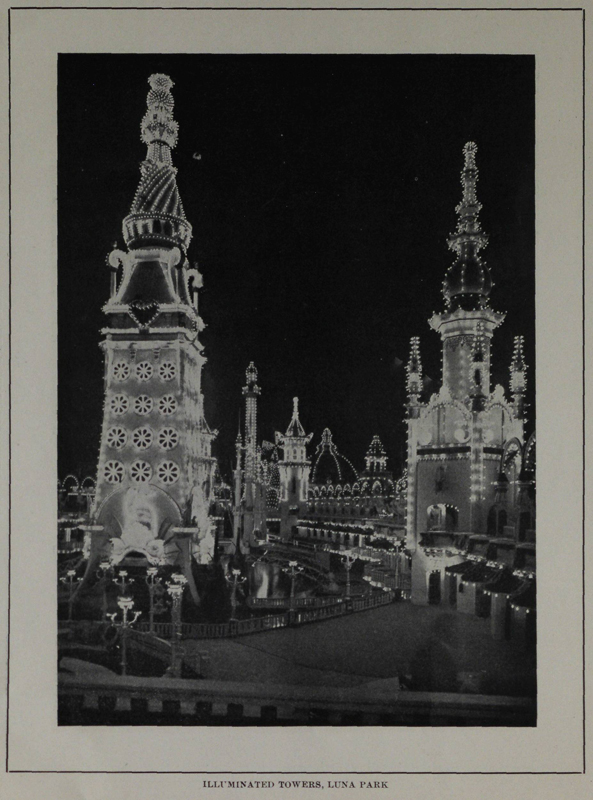
Coney Island’s famous theme park, Luna Park is opened by Frederic Thompson and Elmer Dundy, attracting 40,000 patrons on its opening evening. The park is nicknamed ‘Electric Eden’ because of the 250,000 lights illuminating the domes, towers and spires. The park burns down in 1947, but is re-created and re-opened in 2010.
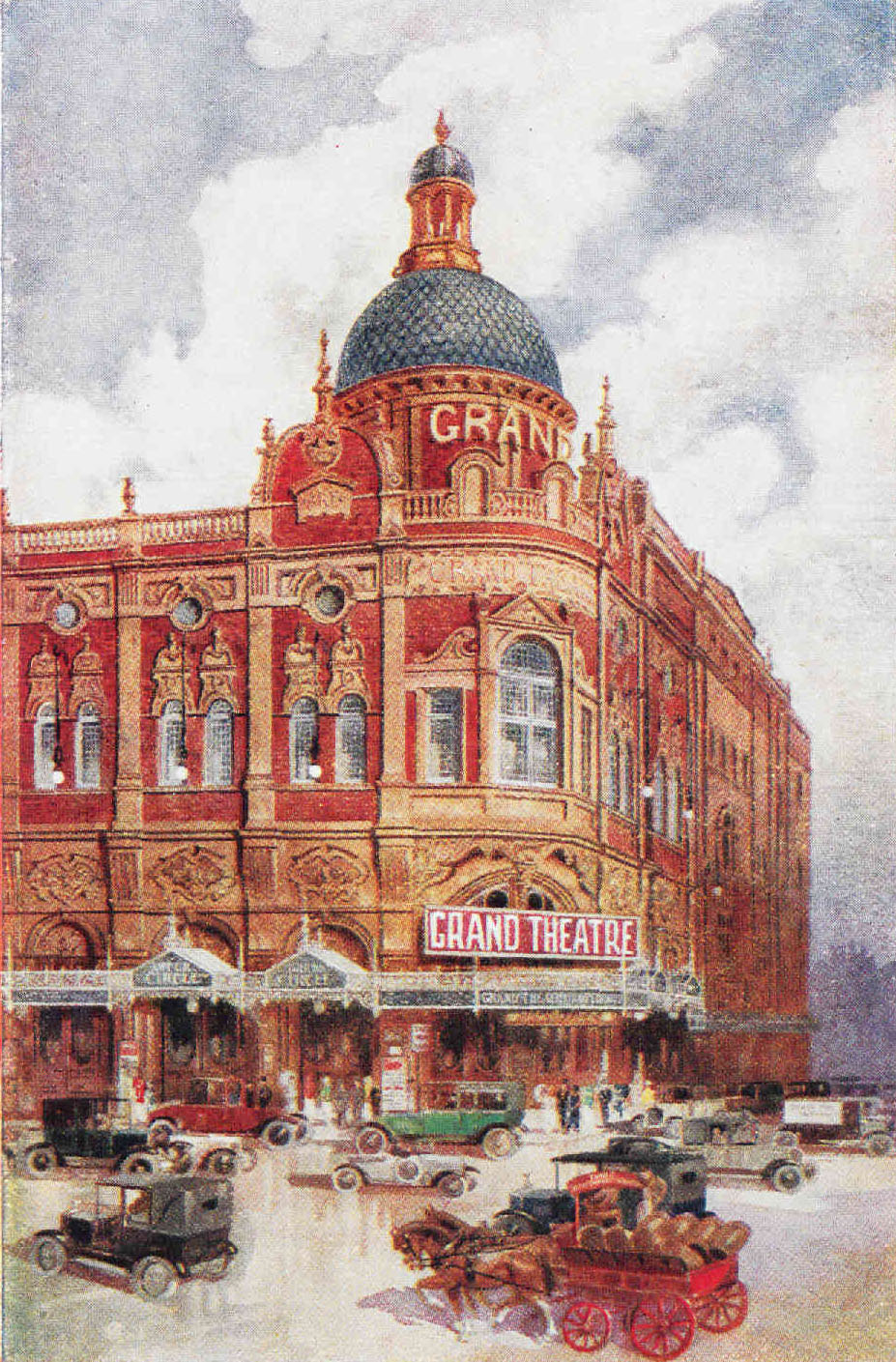
Grand Theatre in Blackpool is built.
2,151,570 miles of rural public roads exist in the US, but 93% of these are dirt tracks.
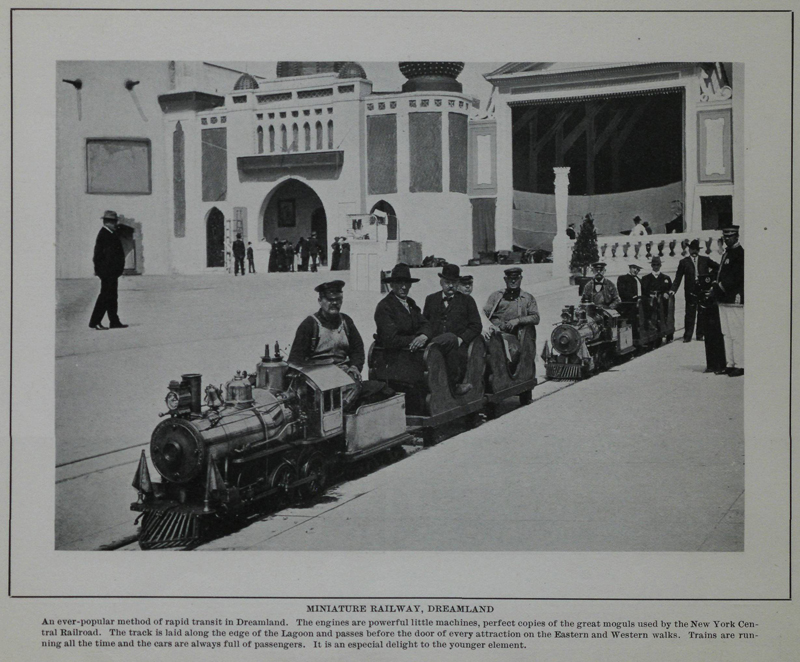
Dreamland amusement park is opened by Senator William Reynolds on Coney Island. It is the biggest of the three original Coney Island amusement parks and is destroyed by fire in 1911.
The 'Pleasure Beach' name is first advertised in Blackpool.
Der Wandervogel [The Migratory Bird] organisation is formed in Berlin to give access to mountaineering for the working classes.
The Antiquities Act is passed in the US, making it possible for the President to declare landmarks or objects as national monuments.
John Fletcher Dodd’s Socialist Holiday Camp opens in Caister near Great Yarmouth, Norfolk. It offers holidays to the working men of London.
Devils Tower in Wyoming is declared by President Theodore Roosevelt as the first National Monument.
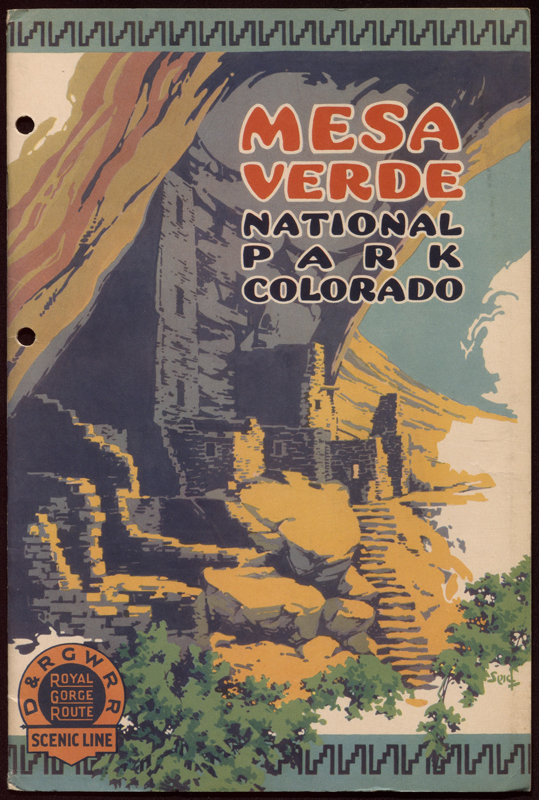
48,966 acres of land are set aside by Congress to create Mesa Verde National Park, Colorado. The park contains some of the best preserved prehistoric remains in America.
The Ritz in London is opened. The hotel is the first steel framed building of significance in London and includes bathrooms for every room, double glazing, a ventilation system and brass beds.
Ellsworth Statler opens his first permanent hotel, Hotel Buffalo in New York, offering rooms for a very cheap price, which led to the slogan “a room and a bath for a dollar and a half”.
The first Scout camp takes place on Brownsea Island, near Poole, England.
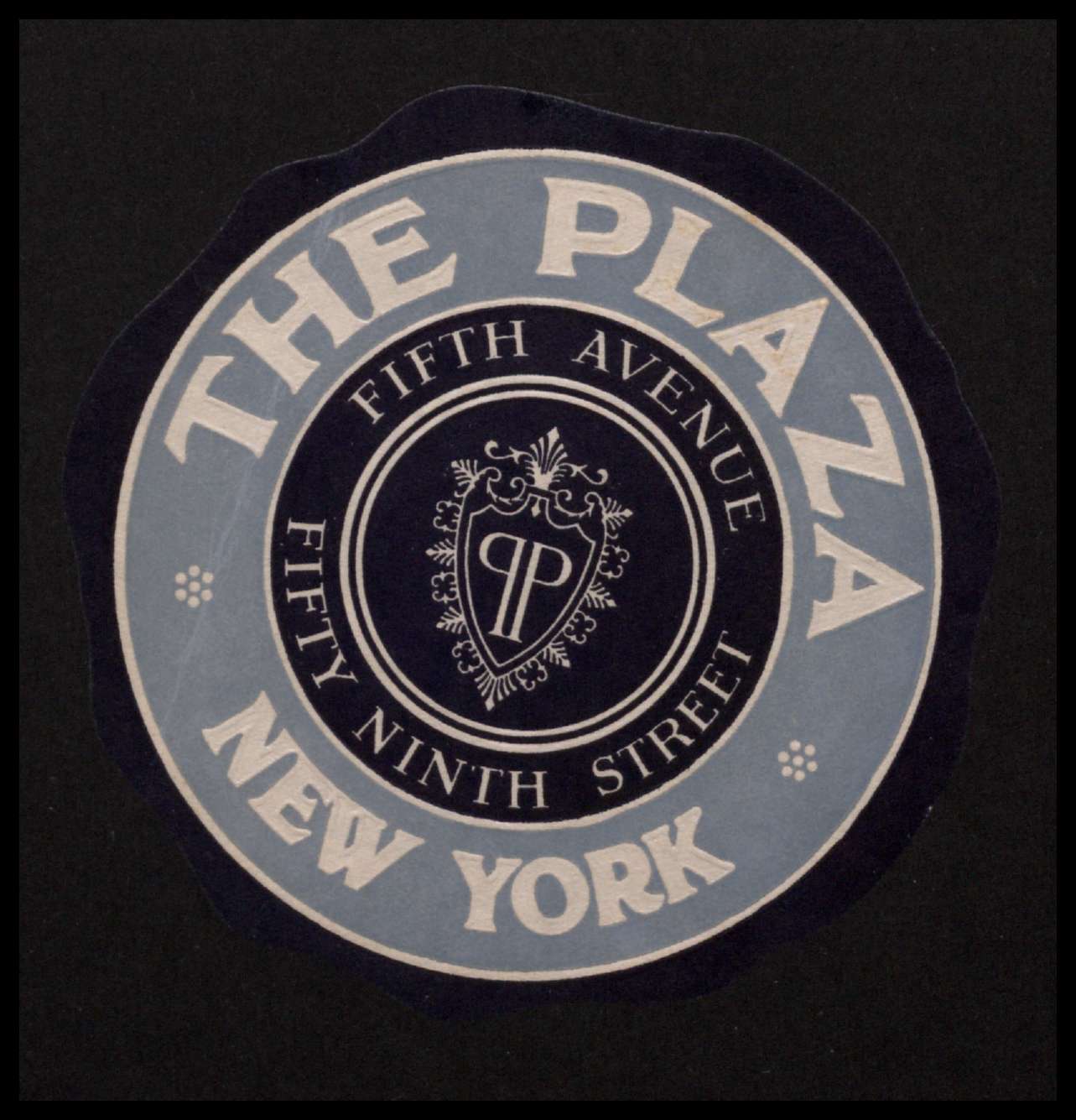
New York City Plaza Hotel opens. Amenities on offer to guests include telephones and pincushions.
The Caravan Club of Great Britain and Ireland is founded by a group of wealthy men inspired by Dr William Gordon Stables and his touring caravan.
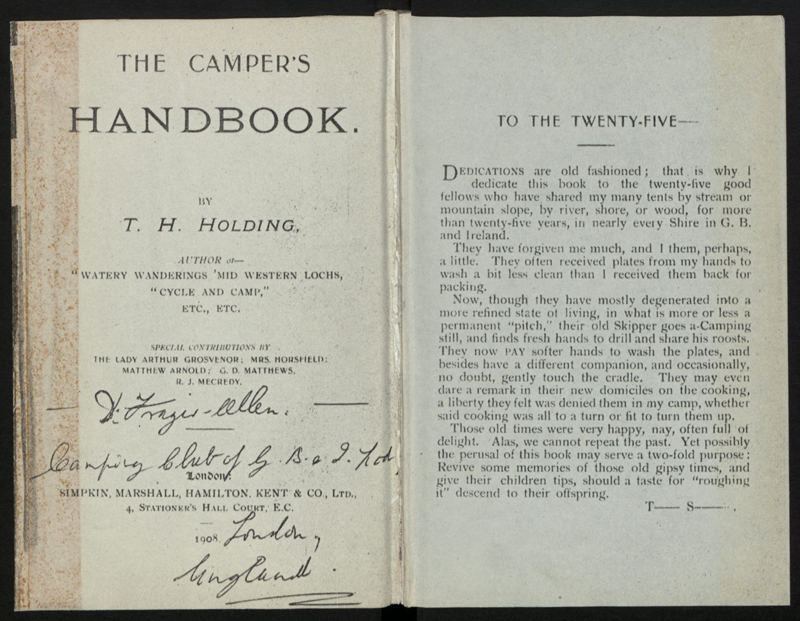
Thomas Hiram Holding publishes The Campers Handbook.
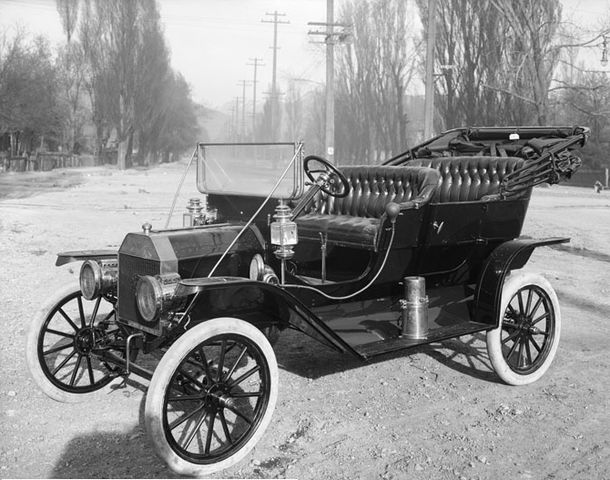
Henry Ford begins production of the Model T 'Tin Lizzie' motor car, making automobile ownership a reality for the 'average' American for the first time.
The first Gideon Bible appears in the Superior Hotel, Montana.
100,000 Americans now own an automobile.
The first Radisson Hotel is built in Minneapolis, Minnesota. Founded by heiress Edna Dickerson, the hotel is named after the 17th century French explorer Pierre-Esprit Radisson.
The first cinema opens in Brighton.
Polish inventor Kazimierz Proszynski builds the Aeroscope, the first hand-held operated film camera.
The Goring is built in Belgravia, London. Still owned and operated by the Goring family, the 69 rooms boast en-suite facilities and central heating.
The Ritz in Madrid is inaugurated, at the behest of King Alphonse XIII.
The American Hotel Protective Association is formed in Chicago by 60 hotel operators. Its purpose is to protect hotels from check forgers, undesirable lodgers and criminal activity.
Glacier National Park is established in Montana, USA.
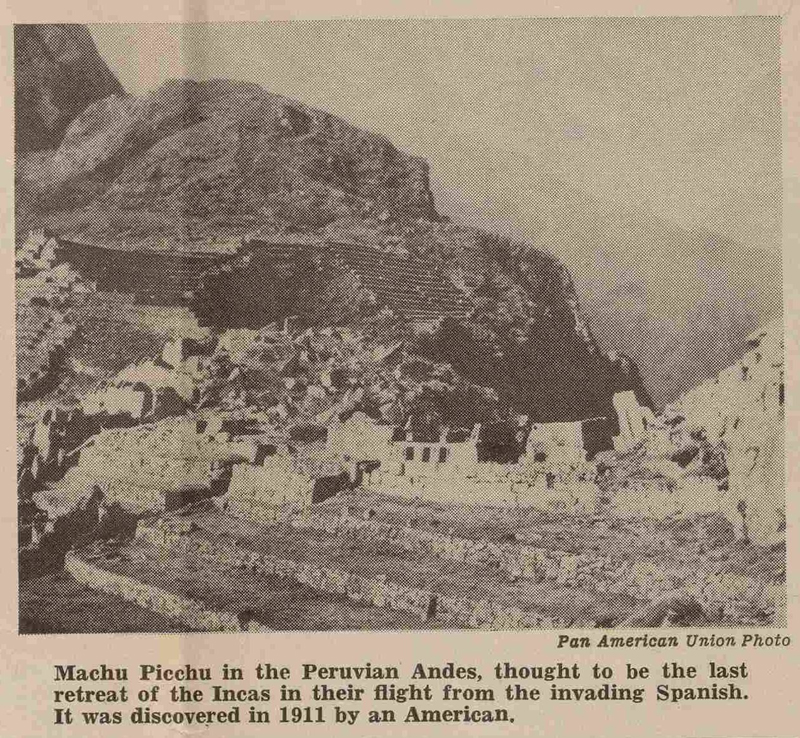
Machu Picchu is officially discovered by the first Westerner, American Hiram Bingham. It eventually develops into a popular tourist destination.
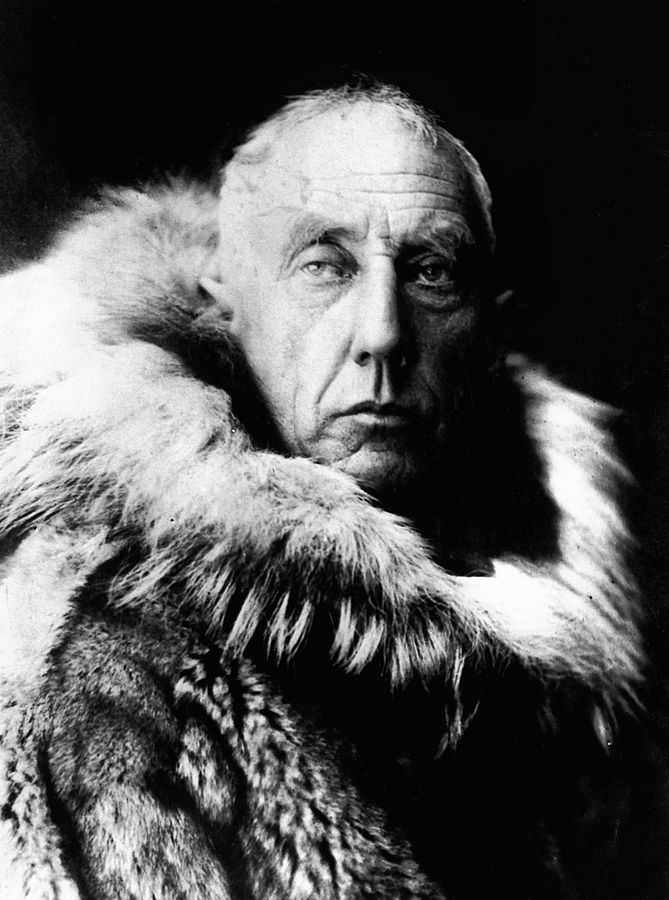
Norwegian explorer Roald Amundsen becomes the first man to reach the South Pole.
Dreamland amusement park on Coney Island is destroyed by a fire. The fire is caused by renovation work underway to allow the park to compete with the more popular Luna Park. An electrical fault on the ride "Hell's Gate" causes the illuminations to explode and land on a a kicked-over bucket of hot pitch and the park swiftly goes up in flames. Many of the surrounding buildings burn down and 60 animals featured in the amusements are killed, despite rescue attempts.
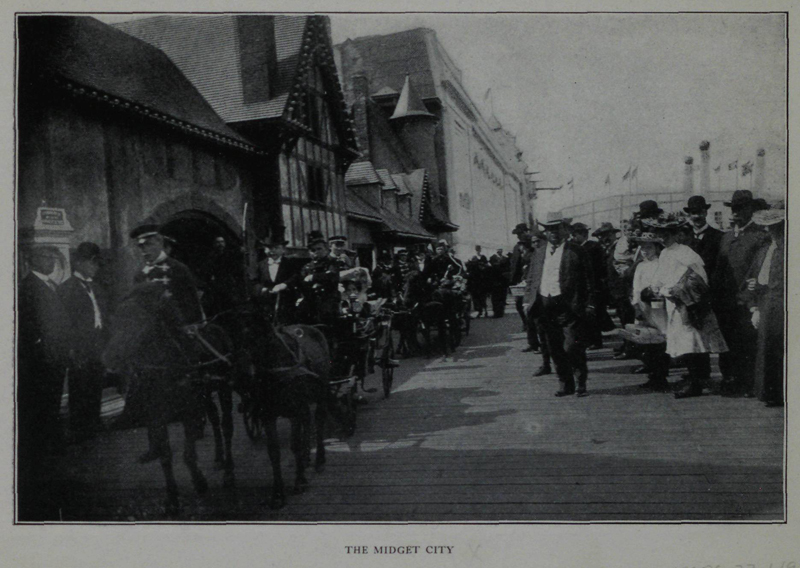
Samuel Gumpertz opens the Dreamland Circus Sideshow at Coney Island. A collection of human oddities are displayed such as midgets, giants, bearded ladies, fat ladies, skeleton men, albinos, legless men and women, pinheads and even a Bentoc head-hunting chief.
The Municipal Bath House is constructed on Coney Island. The bath house comprises of changing rooms and 12,000 lockers which can be rented from fifteen to twenty-five cents, providing cheap conveniences for working class families.
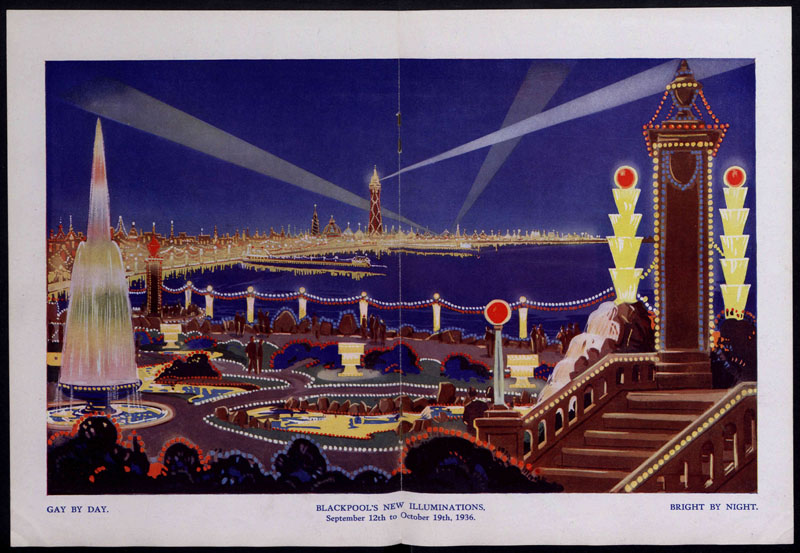
The first Blackpool Illuminations are staged on Princess Parade in May to mark the first Royal visit to Blackpool. Princess Louise officially opens a new section of promenade that is decorated with approximately 10,000 bulbs. The event is such a success that the council stage the light show every year.
Local legislation restricts the number of beach stalls allowed on the sands of Weston-Super-Mare to 50 due to crowding in previous years.
Stenson Cooke, secretary of the AA, suggests using the star rating of brandy tasting to rate hotels, implementing the 3-star hotel classification system.
Commercial radio broadcasts now operate from New York.
The Casino is built in Blackpool for a cost of £13,352.
The Lincoln Highway is formally opened on 31 October. It forms one of the first transcontinental highways in the United States, running from Times Square, New York to Lincoln Park, San Francisco and is 3,389 miles long.
Blackpool in Lancashire, the world’s first working class seaside resort, has around four million visitors every summer.
Britain declares war on Germany on 4 August 1914 beginning the First World War. Approximately 38 million people die in one of the deadliest conflicts in human history.
Bournemouth lifts its ban on Sunday trains, allowing more working class patrons to travel for the day to its beaches.
The prehistoric site of Stonehenge is auctioned off in a public auction. Cecil Chubb purchases it for £6,600 and later gifts it to the British government.
In February, German declares an area encompassing the entire coastline of Britain as a war zone. Ships within this area are now liable to search and attack.
The German Embassy in New York releases a statement, published in 50 American newspapers, warning against travel on the Lusitania's return voyage to Great Britain. The notice read: "TRAVELLERS intending to embark on the Atlantic voyage are reminded that a state of war exists between Germany and her allies and Great Britain and her allies; that the zone of war includes the waters adjacent to the British Isles; that, in accordance with formal notice given by the Imperial German Government, vessels flying the flag of Great Britain, or any of her allies, are liable to destruction in those waters and that travellers sailing in the war zone on the ships of Great Britain or her allies do so at their own risk."
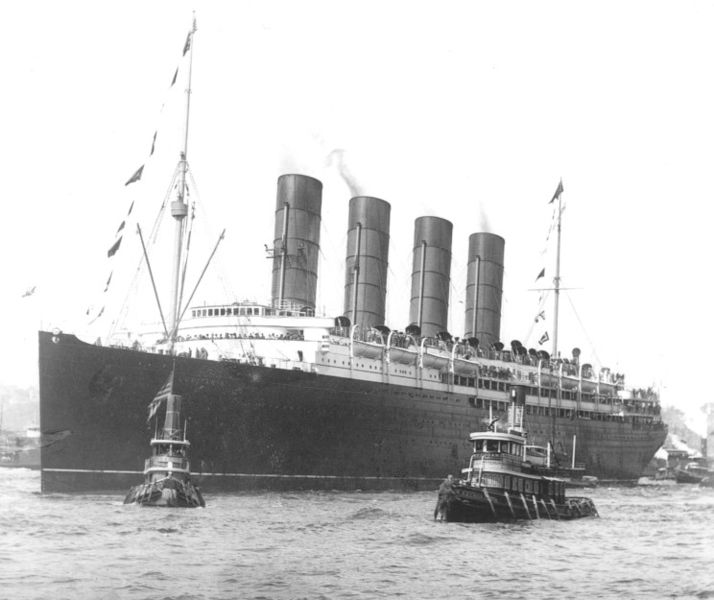
The RMS Lusitania is torpedoed and sunk by a German U-Boat off the coast of southern Ireland, resulting in the death of 1,198 passengers and crew. The resulting British propaganda worked to help turn public opinion in the United States against Germany, as over 100 of the fatalities were American citizens, contributing to the United States declaration of war against Germany in 1917.
The South Bay Bathing Pool at Scarborough, England is opened, making it one of the earliest lidos in the UK. Lidos create a safe and luxurious swimming environment for holiday makers and ensure swimming and participation in water-themed entertainment continues even when the sea is rough.
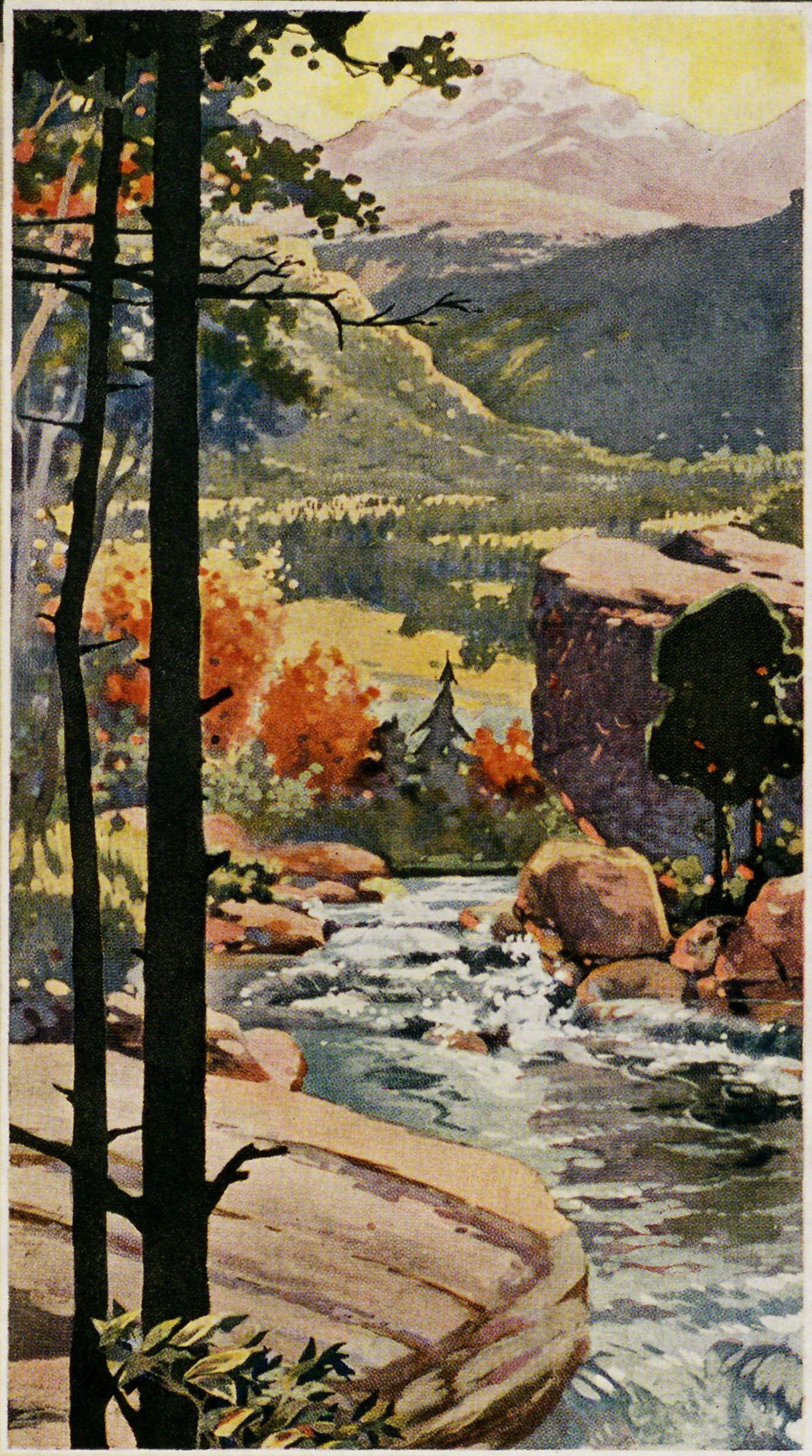
Rocky Mountain National Park in Colorado is established.
The first modern British passport is issued. It includes a description of the passport holder, a photograph and is required to be renewed every two years.
Universal Studios founder Carl Laemmle begins charging tourists 25 cents to tour the studios and watch the filming. A chicken boxed lunch is available for a nickel extra. This is stopped soon afterwards due to the noise, but Universal Studios theme park is opened in 1964. Parks in Orlando (1990), Japan (2001) and Singapore (2011) follow. In 2014, approximately 40.1 million guests visited Universal Studios theme parks, making it the third-largest amusement park operator in the world.
The original 'Nathan’s Famous' opens on the corners of Surf and Stillwell Avenues on Coney Island. This small hotdog stand goes on to become an iconic American food brand.
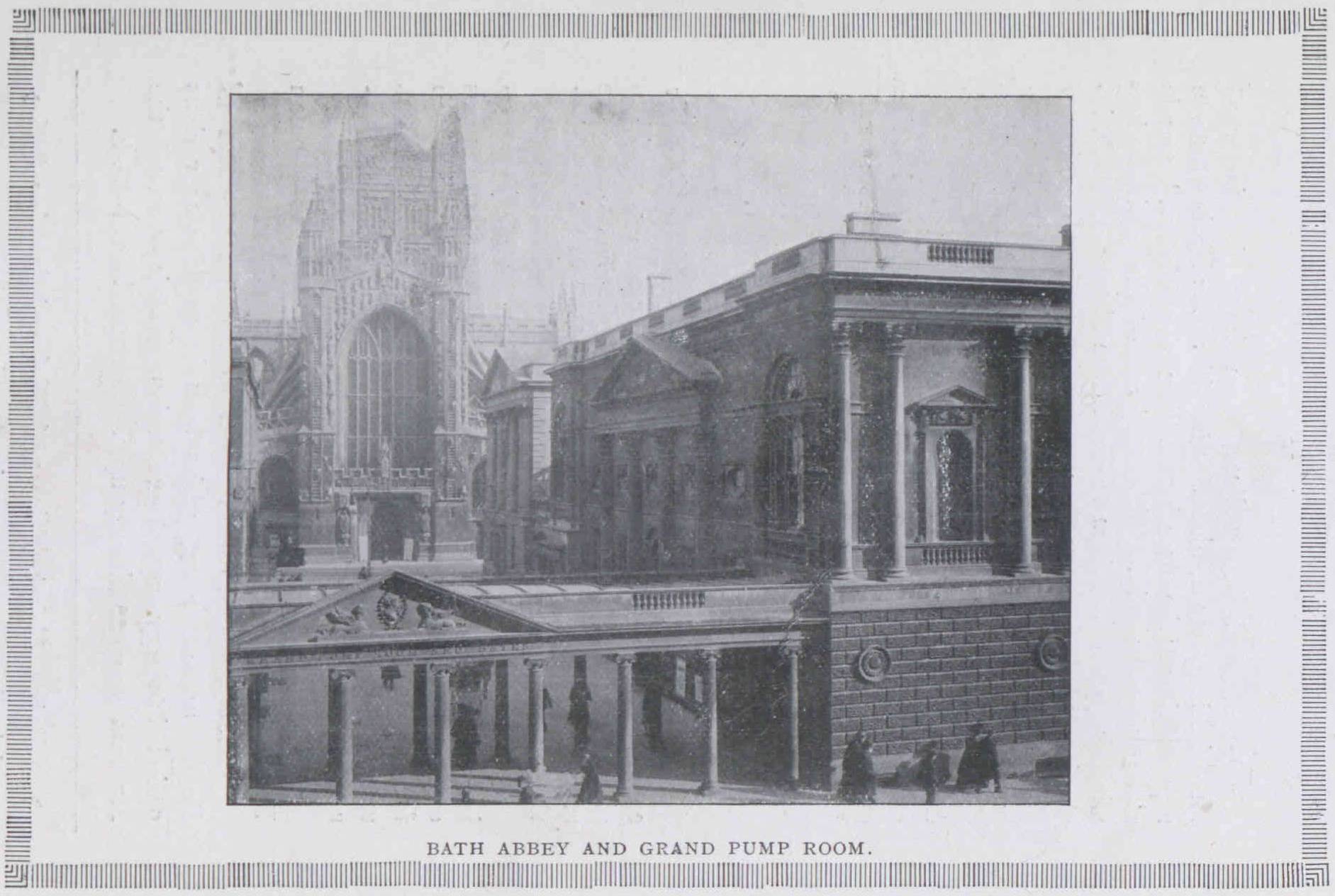
Field Marshall Viscount French opens the latest additions to the Royal Baths in the city of Bath, which now offers deep and reclining baths, a selection of douches, natural vapour baths and a room especially equipped to allow for the inhalation of the radioactive gases given off by the Springs.
President Woodrow Wilson creates the National Park Service, an agency that manages all US national parks.
One million automobiles are now on US roads.
The Haleakalā National Park is established in Hawaii, USA.
The Hawaii Volcanoes National Park is established in Hawaii, USA.
The Lassen Volcanic National Park is established in California, USA.
Congress pass the Federal-Aid Road Act of 1916 to create the Federal-Aid Highway Programme, but progress halts as America enters the First World War.
The American Hotel Protective Association is renamed the American Hotel Association and branches out into legislation, education and hotel promotion.
Denali National Park is established in Alaska, USA.
President Woodrow Wilson requests Congress ratify a declaration of war against Germany. Congress agree on 4 April and the United States of America enters the First World War.
The American Travel Control Act of 22 May 1918 permits the president, when the United States are at war, to proclaim a passport requirement. President Wilson issues this on 18 August 1918, three months before the end of the First World War, but the passport requirement lingered until 3 March 1921.
The First World War comes to an end on the 11 November 1918.
John Miller patents his design for the underfriction roller coaster, revolutionising roller coaster design and allowing for higher drops and faster speeds.
The first direct air crossing of the North Atlantic is completed by Captain John Alcock DFC and Lieutenant A. Whitten Brown, between Newfoundland and Ireland. The journey takes 15 hours and 57 minutes between 14 and 15 June.
On 10 November the first item of international airmail is carried by Transport and Travel on flight DH4A G-EAHF. An Airmail pennant is pinned to the rudder.
Thomas Cook is the first travel agency to offer pleasure trips by air.
Acadia National Park is established in Maine, USA.
Grand Canyon National Park is established in Arizona, USA.
Zion National Park is established in Utah, USA.
The Italian State Tourist Office is created to help facilitate domestic and international tourism.
Barcelona opens a Ritz. The bathrooms boast hot and cold running water.
Conrad Hilton buys The Mobley, a hotel in Cisco, Texas, and the history of the famous hotel chain begins.
Prohibition introduced in the United States.
1.2 billion passengers travel around the US by railroad.
The British government pass the 'Railways Act' (1921), relinquishing their war time control of the railway by helping to create 'The Big Four' mainline companies; GWR (Great Western Railway), LMS (London, Midland and Scottish railway), LNER (London and North Eastern Railway) and Southern Railways (South of London). The Act comes into effect on 1 January 1923.
Numbers of American tourists visiting Europe increases rapidly.
Leading American department stores such as Marshall Field's, Wanamaker's and Bullock's capitalise on leisure travel mobility and host American Express travel booths instore.
The average miles clocked by American tourists increases from 67,639,906,000 to 228,775,184,740. Around 83% can be attributed to the increased use of automobiles.
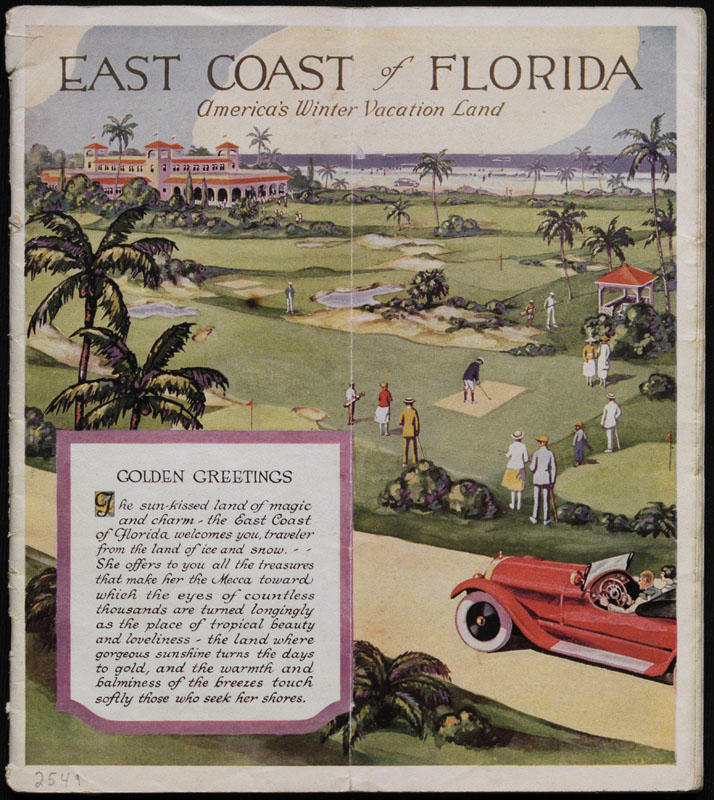
Americans from northern and mid-western states begin travelling to Florida and warmer southern states for the winter. They are nicknamed "snowbirds".
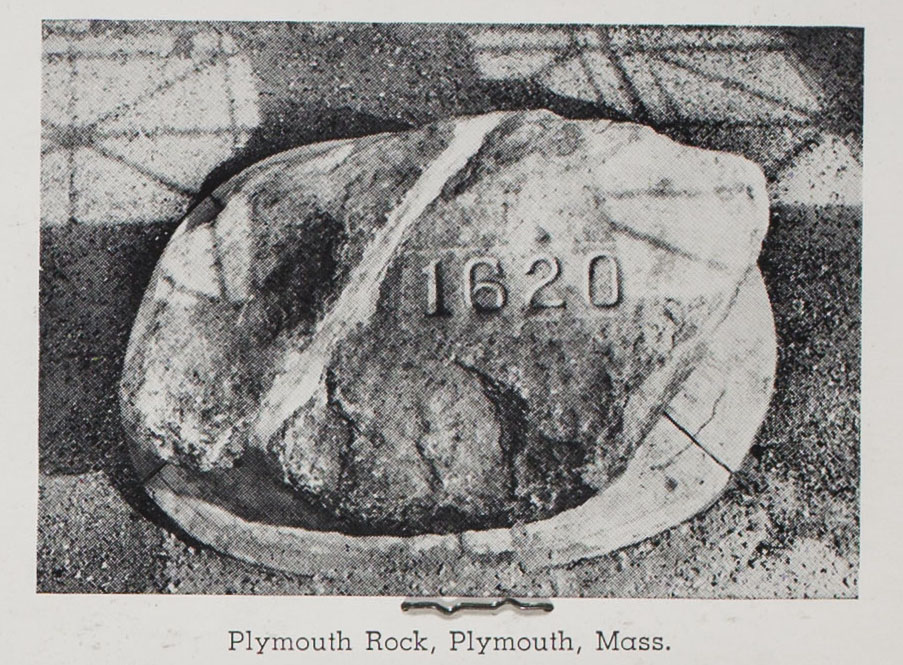
"Plymouth Rock" is returned to its original position on the shoreline in Plymouth, Massachusetts and established as a tourist attraction, after being moved around Plymouth since its identification in 1741.
![Postcards of Hot Springs National Park, Arkansas [Trip to Hot Springs, Arkansas, 22 October 1940]](media/lu_stantdc65_11_1_0005.jpg)
Hot Springs National Park is established in Arkansas, USA.
The Bureau of Public Records provide funding for paved two-lane interstate highways. This is made possible by the Federal Highway Act of 1921.
The Railways Act 1921 groups all existing UK railways into the 'big four' companies: Great Western Railway; London, Midland and Scottish Railway; London and North Eastern railway and Southern Railway.
Arnold Lunn, the son of Henry Lunn, invents the slalom skiing race, further commercialising and developing the sport.
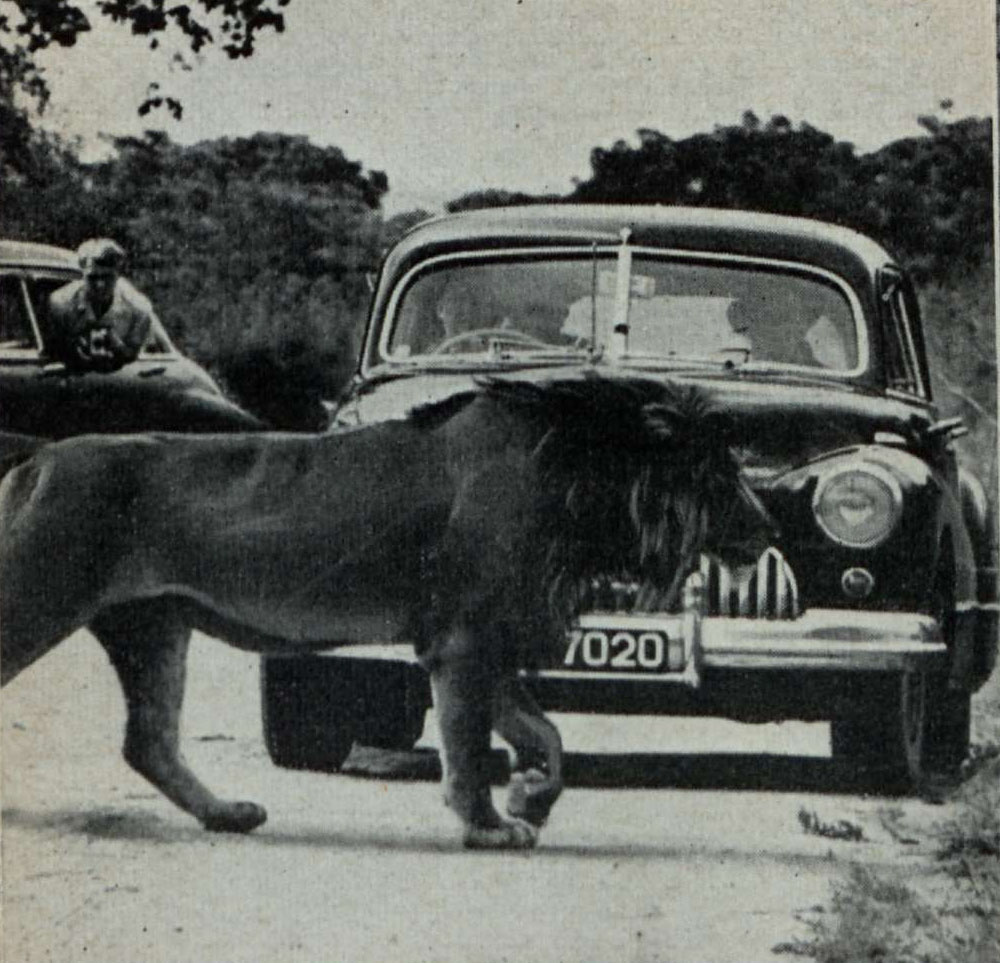
Thomas Cook & Son organises the first full tour of the length of the African continent. It lasts five months and includes a month long safari.
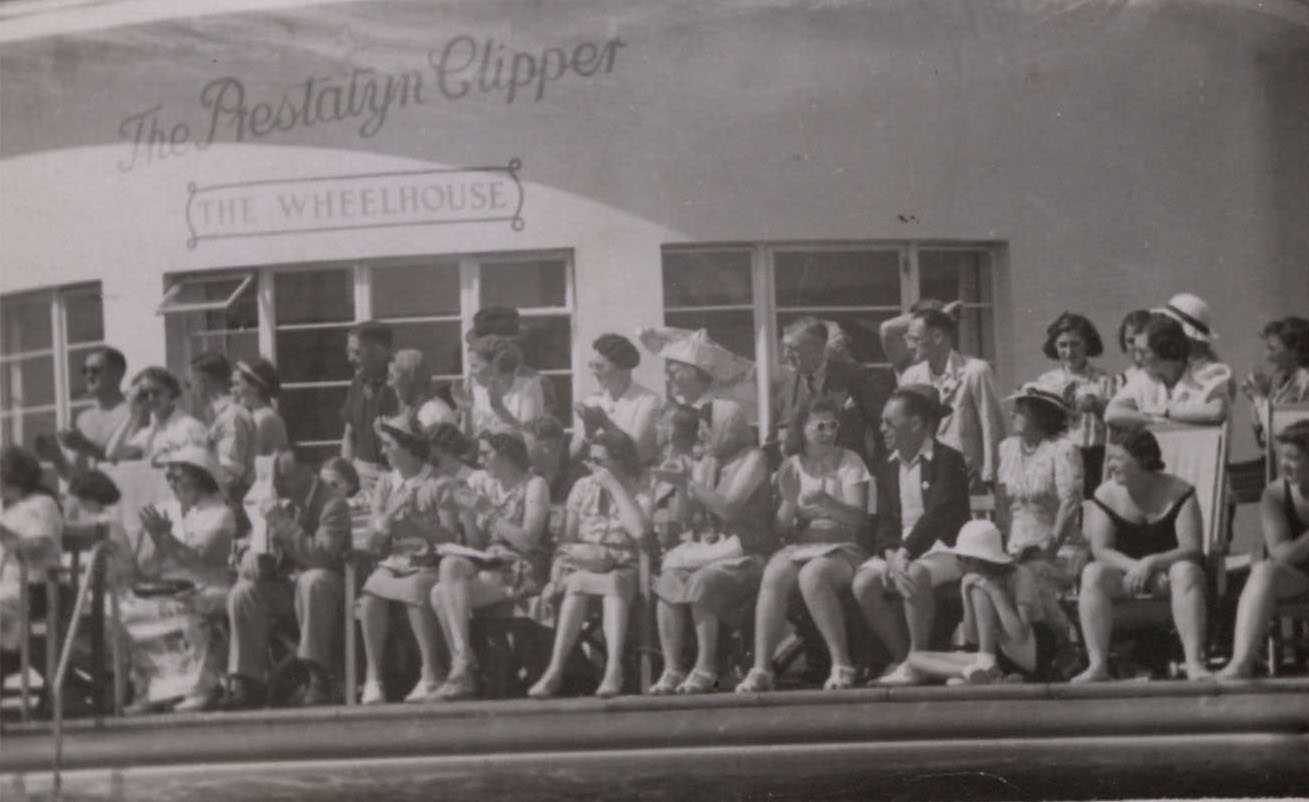
Prestatyn, North Wales opens a lido outdoor pool on the seafront to encourage holiday makers.
The British Broadcasting Corporation is formed and commercial radio programming begins.
The Big Dipper in Blackpool opens. The world famous roller coaster costs £25,000 to build.
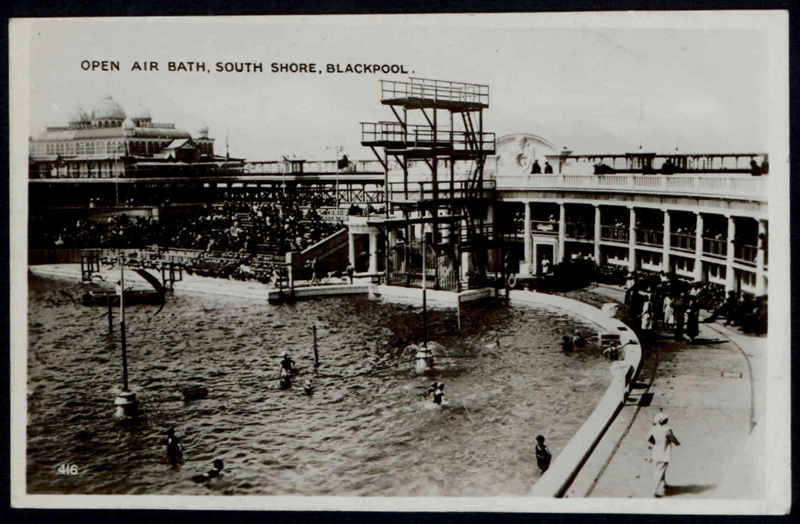
Blackpool spends £75,000 opening a lido outdoor pool. It is 376ft by 172ft (116m x 53m).
Coco Chanel returns from a holiday cruise around the South of Cannes with a sunburn and inadvertently starts a new trend for tanned skin and sunbathing.
La Mamounia opens in Marrakech, Morocco. Designed by architects Marchisio and Prost and including some beautiful gardens, the hotel is frequented by Winston Churchill.
"Human Fly" Harry F. Young is hired to climb the Hotel Martinique in New York to promote a silent movie, "Safety Last." Young, wearing a placard saying “Safety Last” loses his grip and sadly falls nine storeys to his death in front of a huge crowd.
The American Hotel Association now covers multiple states including Washington, Montana, Ohio, Illinois, Mississippi, Massachusetts, New Jersey, Delaware, New York, Pennsylvania, California, and New Hampshire. Rooms cost five cents.
Thomas Cook and Son is incorporated as Thomas Cook and Son Ltd.
The first 'motels' appear in California.
The first hotel to officially carry the Hilton name opens in Dallas, Texas. As air conditioning has yet to be invented, no guest rooms face the western sun.
The first commercial radio broadcasters are now on air.
Thomas Cook and Son opens its new headquarters in Berkeley Street, London.
Norwegian explorer Roald Amundsen, American Lincoln Ellsworth and Italian engineer Umberto Nobile sight the North Pole in the airship Norge.
Sir Frances Towle founds the 'Come to Britain' movement, to encourage tourism. London is a special focus, particularly the roles to be played by the private sector, such as hotels.
Shenandoah National Park is established in Virginia, USA.
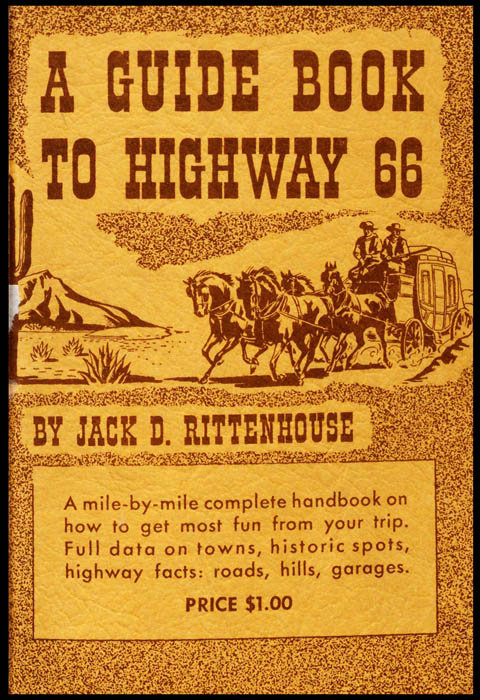
The famous US Route 66 is opened on 11 November. It runs from Chicago, Illinois to Santa Monica, California, covering a distance of 2,448 miles. US 66 becomes a major route for those migrating to the West of the United States.
Hotel Statler, Boston becomes the first hotel to offer guests free radio programmes, private baths and free morning newspapers.
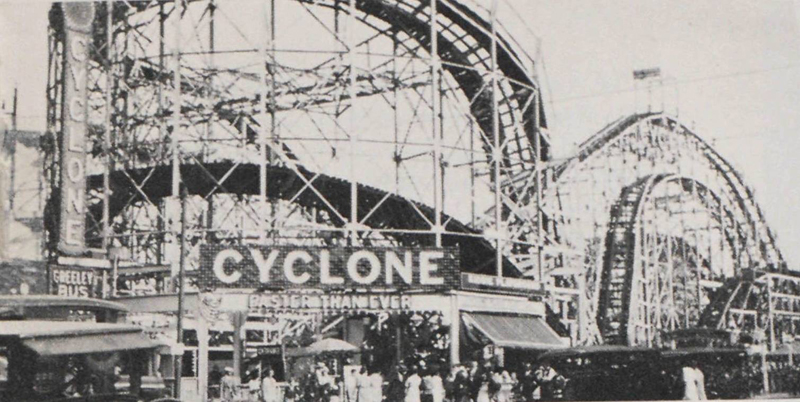
The world famous Cyclone roller coaster opens on Coney Island.
Cold running water and air-conditioning in public areas are two of the new features for the Hilton at Waco, Texas.
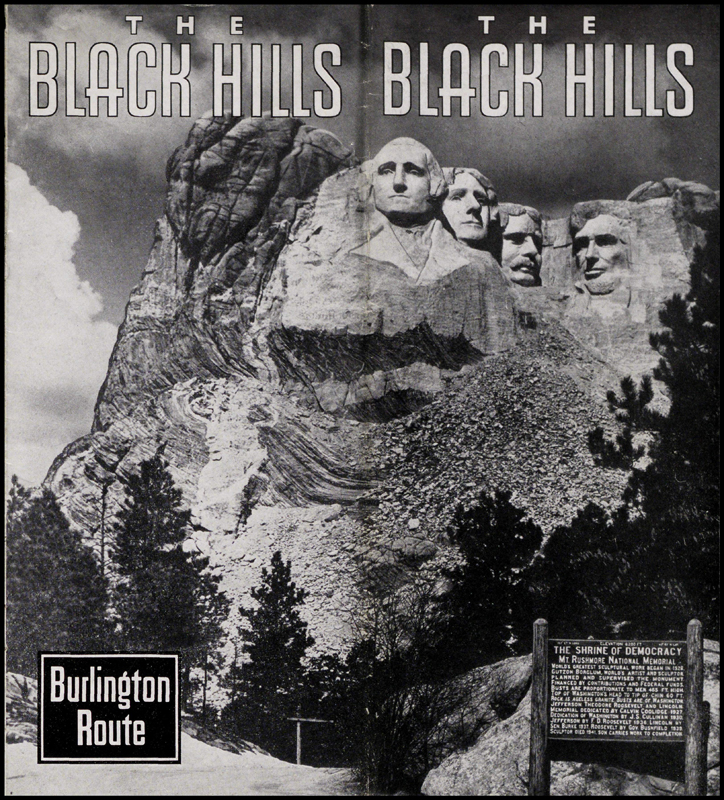
Gutzon Borglum and 400 workers begin the long project of carving the Mount Rushmore monument. After his death in 1941 his son, Lincoln Borgum, finishes it in that year.
The two surviving Cook brothers sell Thomas Cook and Son to Compagnie Internationale des Wagons-Lits. It becomes a subsidiary of the international hotel and travel logistics company, which also operates the Orient Express.
The Peninsula Hong Kong opens to the public. The hotel holds the world record for the largest single orders of Rolls-Royce cars. The company expands across Asia, Europe and the United States, with 10 hotels in operation.
Playland in Rye, New York opens. Designed by a New York architectural firm, under direction of Frank Darling, it is the first fully planned amusement park built from the ground up.
The 'Flying Scotsman' locomotive completes the first non-stop service between London and Edinburgh, reducing total journey time to just 8 hours.
Bryce Canyon National Park is established in Utah, USA.
Arches National Park is established in Utah, USA.
Western Hotels are formed through a merger with 17 hotels in the Pacific Northwest.
Grand Teton National Park is established in Wyoming, USA.
The 'Travel Association of Great Britain and Ireland' is founded in April with the aim to increase both tourism to the United Kingdom and the demand for British goods.
Professor Sir Frederick Ogilvie publishes his first economic study of international travel to and from Britain. It estimates that 692,000 people from overseas visited Britain during 1929, while approximately one million British residents travelled abroad.
Financial pressures of the Great Depression cause 88% of American hotels to go into some form of receivership.
The '99' Flake, a smaller version of the traditional Flake bar, is produced by Cadbury especially for ice creams. It leads to the launch of the '99' ice cream, which quickly gains popularity at seaside destinations in the UK.
Nazi Germany and Soviet Russia organise cheap holidays on a huge scale for party members and youth members, creating a link between political ideas and mass tourism.
Bertram Hutchings Caravans Ltd launches the 'Winchester' caravan, dubbed the 'Rolls Royce of Caravans'.
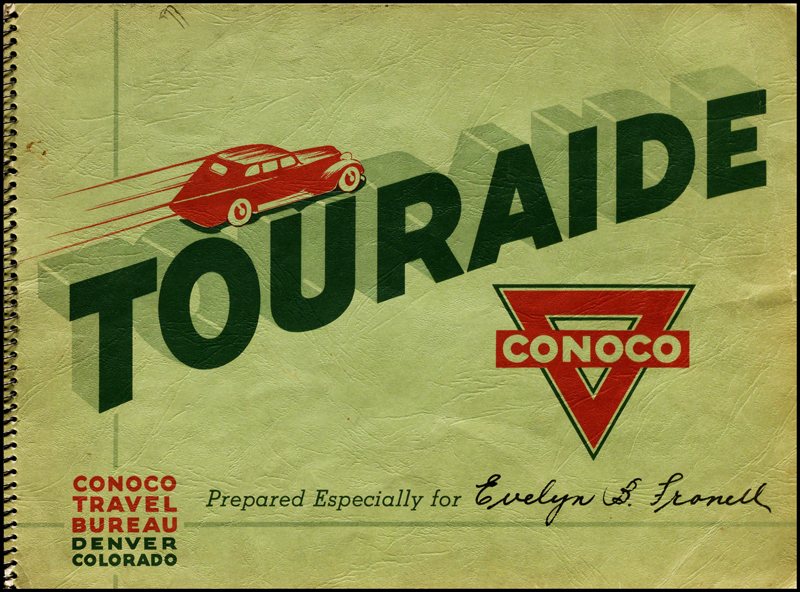
First 'Touraide' published, offering customers a personalised selection of maps and information for self-determined road trips across America.
American Airways, Inc is created from Aviation Corporation airline subsidiaries.
Carlsbad Caverns National Park is established in New Mexico, US.
The Bureau of Public Records help state and local governments create as many road-building projects as possible to provide jobs during the Great Depression.
The State of Nevada legalises commercial casino gambling. The first gaming licence is issued to Mayme Stocker for her Northern Club, a hotel and bar that had been operating since 1920 in Las Vegas. The club is still in operation as La Bayou. Over the next 70 years, approximately 76 casino hotels have been built in Las Vegas.
Originally opened in 1927, the Riverside Hotel in Reno becomes famous in 1931 for divorces and gambling after favourable legislation was passed in Nevada for both. There are now approximately 21 casinos in ‘The biggest little city in the world’.
The second Waldorf-Astoria hotel opens on Park Avenue, and is the tallest and largest hotel in the world.
Captain Harry Warner establishes Hayling Island's first holiday camp at Northney, beginning his successful involvement with seaside resorts.
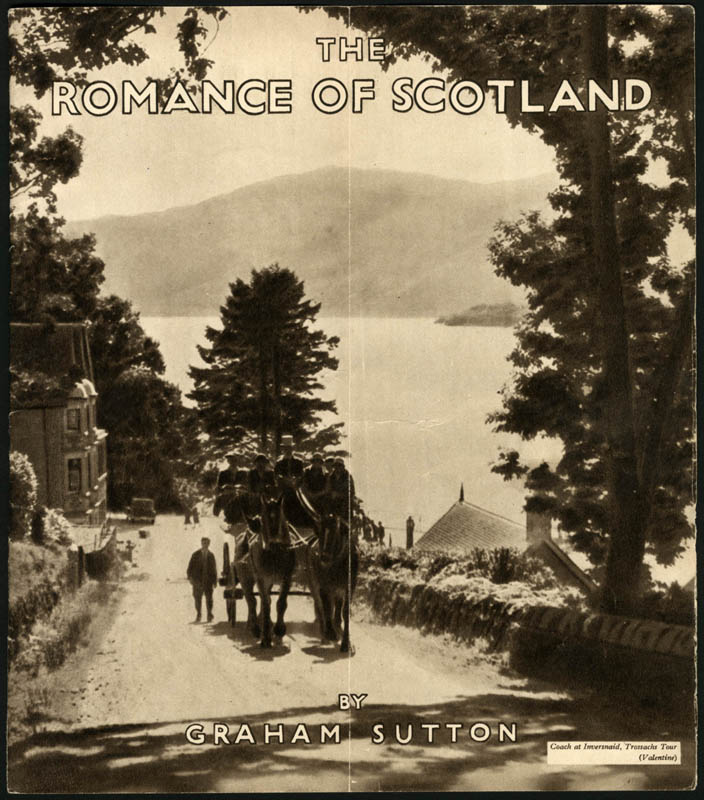
The National Trust for Scotland for Places of Historic Interest or Natural Beauty (often known as just 'The National Trust for Scotland') is established and given statutory power to preserve and run historic sites, landscapes and nature reserves in Scotland.
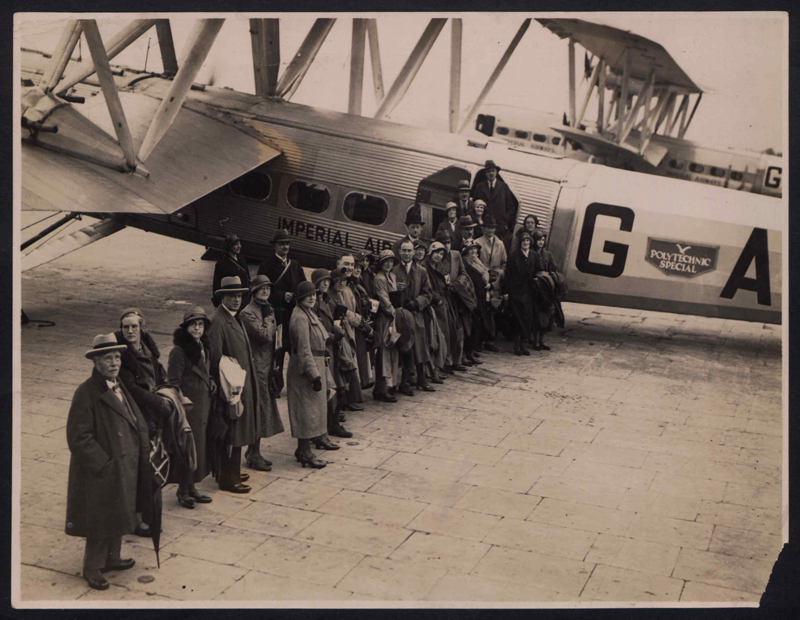
Polytechnic's first escorted tour by air to Switzerland leaves on 14 May 1932.
The Anspach Travel Bureau is founded by brothers Herman and Robert Anspach. It specialises in up-scale leisure travel.
Cunard Line introduce 'deferred payment plans' to make leisure travel via steamship more affordable for teachers and office workers.
Prohibition repealed in the United States.
Hastings and St Leonards open an amphitheatre-style outdoor lido in June to cater for demand in outdoor bathing. It is 330 ft by 90 ft.
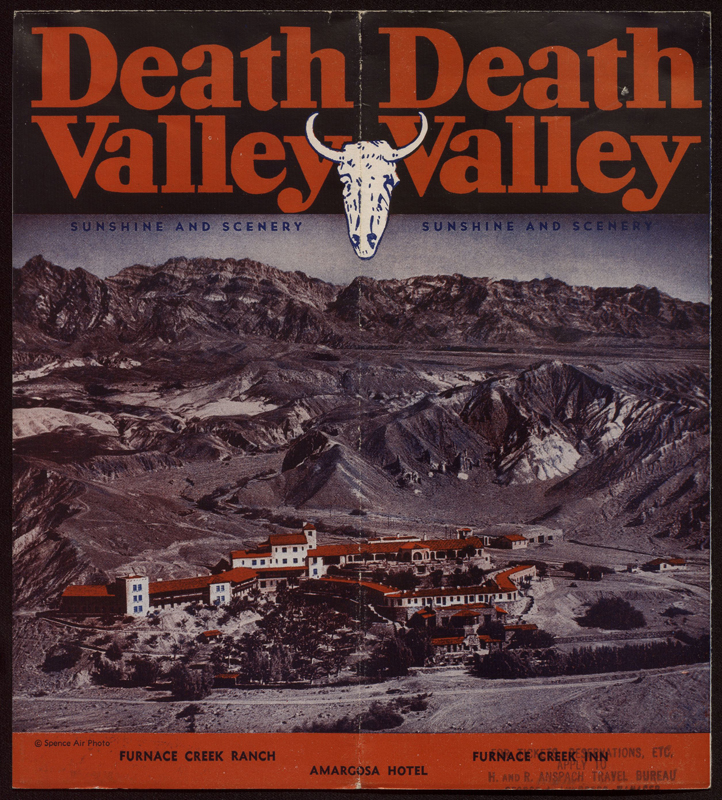
On 11 February 1933 an area of 2,500 square miles in Death Valley, California is made a national monument. A further 478 square miles are added on 26 March 1937.
The National Socialist political regime in Germany sees an increase in travel opportunities aimed at the masses through state organised recreation.
The Civilian Conservation Corps is founded as part of the New Deal program. The mandate expands from conserving forestry and agricultural areas to building recreational areas in state parks.
The merger between Cunard Line and White Star Line is completed on 10 May 1934.
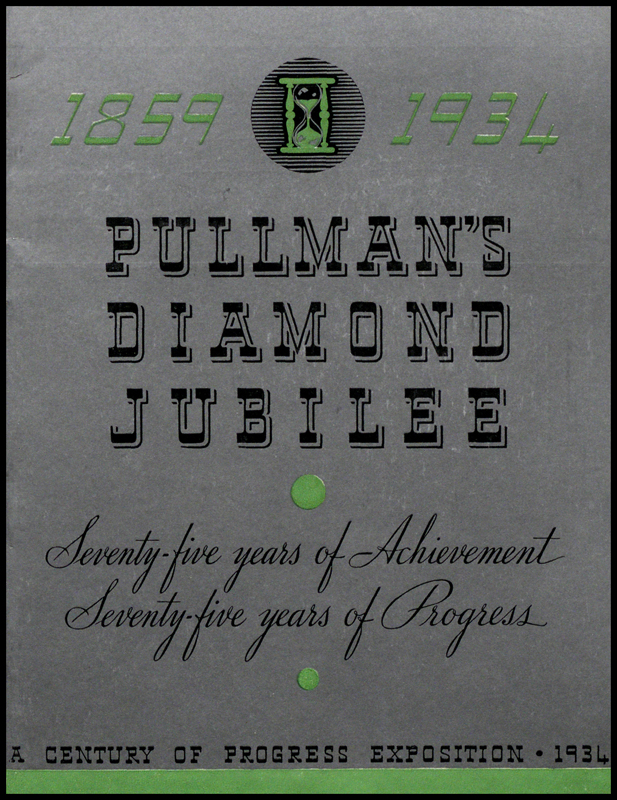
Pullman celebrate their Diamond Jubilee.
American Airways, Inc becomes American Airlines, Inc.
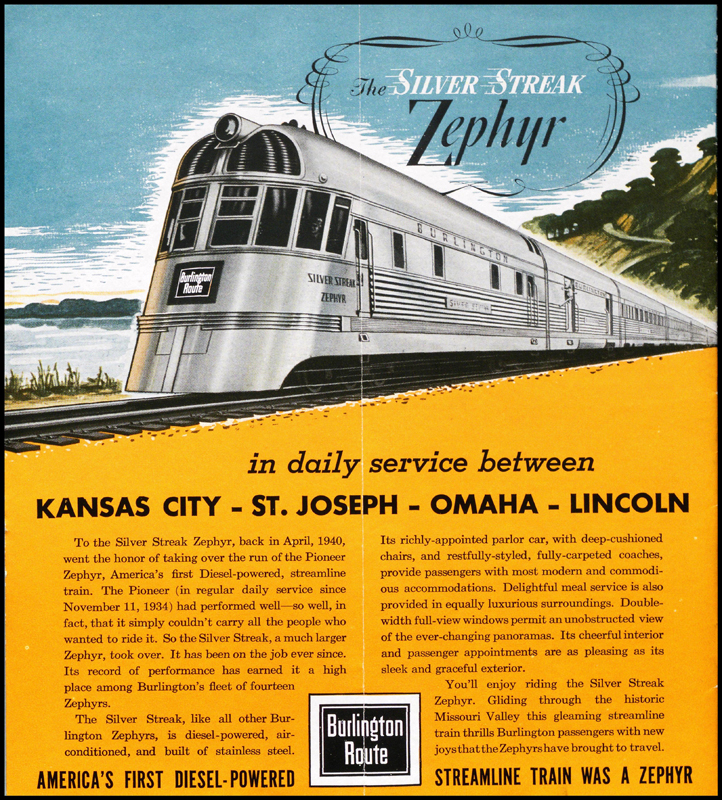
Burlington reveals the Pioneer Zephyr, America's first diesel-powered streamlined passenger train.
Hotel Statler, Boston installs the first central system to control air conditioning in every public room.
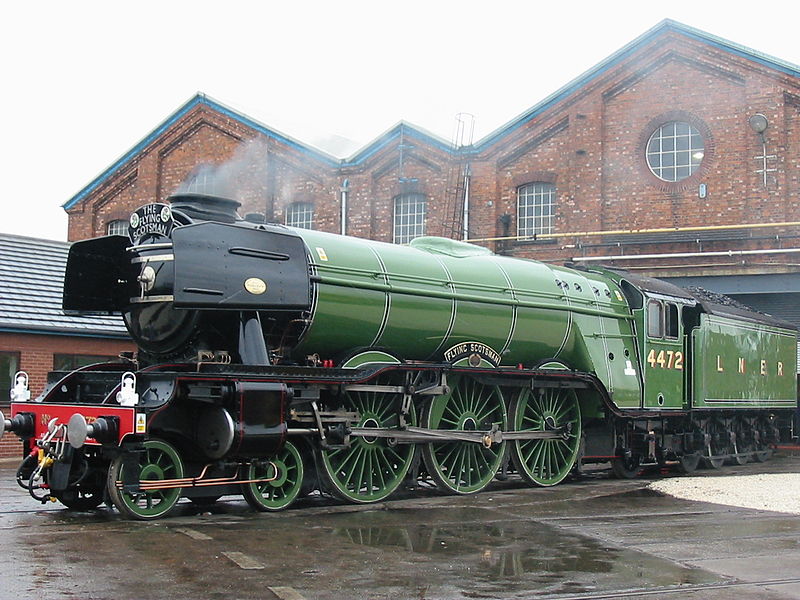
The 'Flying Scotsman' becomes the first locomotive in the UK to be recorded reaching 100mph.
Everglades National Park is established in Florida, USA.
Great Smoky Mountains National Park is established in North Carolina and Tennessee, USA.
Santa Claus Town opens in Santa Claus, Indiana. This park features attractions based on the Santa Claus legend and is often cited as the first 'true' theme park in the world.
The US Congress pass the Historic Sites Act, which outlines programmes for research and inventory of historic sites.
American Airlines, Inc becomes the first airline to fly the Douglas DC-3 as a commercial service.
The maiden voyage of the R.M.S. Queen Mary carries 2,000 passengers between Southampton and New York, taking only five days to cover the distance.
The first chair lift is installed at a ski resort in Sun Valley, Idaho, US.
Billy Butlin opens his first holiday camp in Skegness. Even this first camp is enormous, accommodating over 2,000 guests, and offers a week’s holiday for a week’s pay.
The Marriot family begin delivering boxed lunches from their famous Hot Shoppes chain to the passengers at Hoover Airport; debuting the concept of in-flight catering.
Hotel brand Sheraton is founded in Springfield, Massachusetts by Ernest and Robert Henderson. Within two years, they begin expanding, buying three hotels in Boston and several properties from Maine to Florida.
The Holidays with Pay Act is introduced by the British Government, giving workers the right to one weeks' paid holiday a year.
Steam locomotive 'The Mallard' breaks the world speed record for a steam locomotive, reaching 126mph.
Olympic National Park is established in Washington, USA.
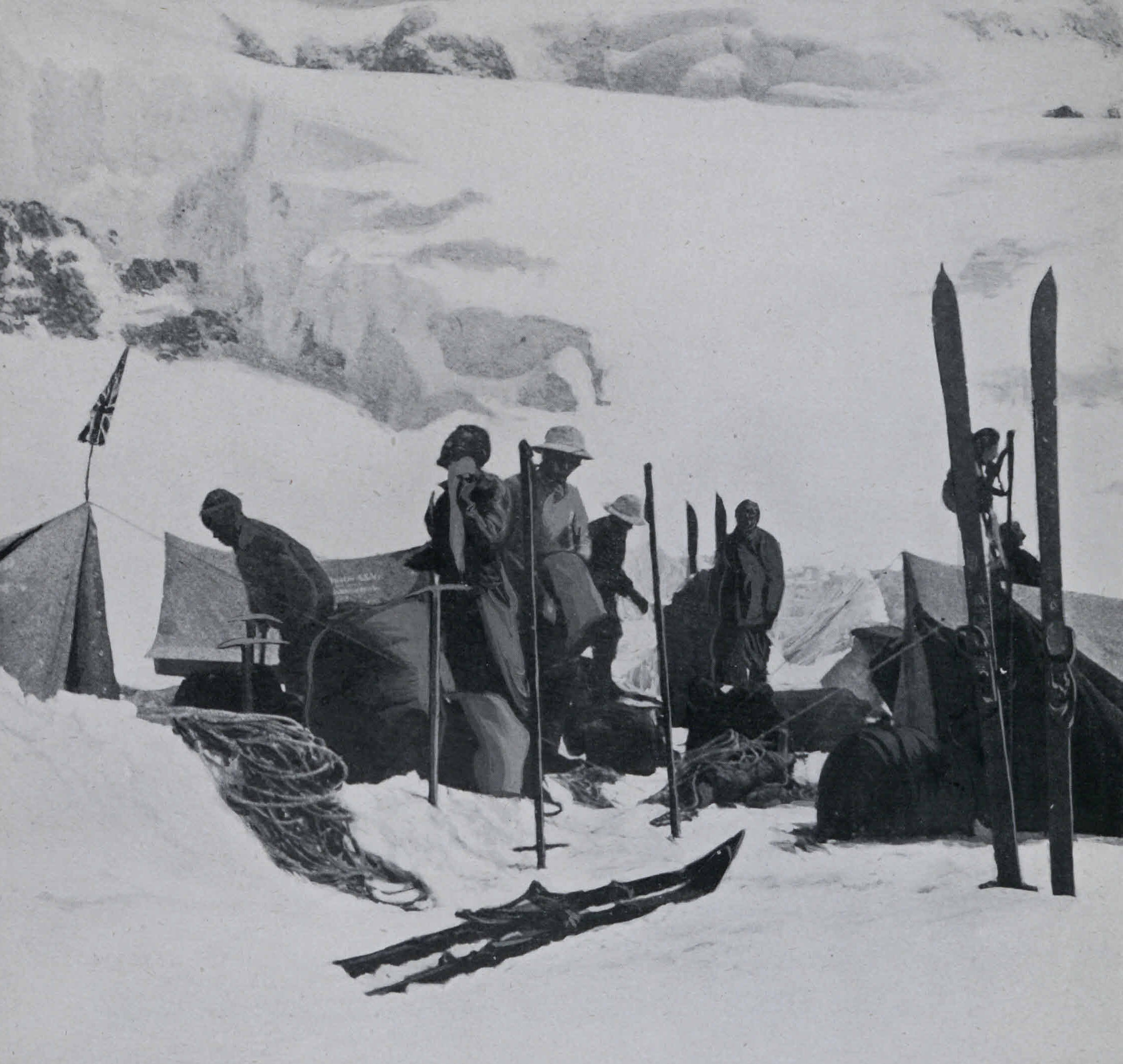
Sestriere, one of the first single-purpose ski resorts, is built in the Northwest Italian Alps by Giovanni Agnelli, the head of Fiat Automobiles. By 1938 it has two hotel towers and a lift network that provides access to 74 downhill runs. Ski holidays had been dependent on local village communities with the capacity for summer tourists, but this caused development of ski resorts all over the world with every aspect of a skiers journey and holiday operated by the resort.
Billy Butlin opens his second holiday camp in Clacton.
The US tourist trade is valued at $5.5 billion, with the average American spending 7% of their annual wages on leisure travel.
Quality Courts motels are formed by seven motel operators.
'American Airlines, Inc' begins trading on the New York Stock Exchange.
Germany invades Poland on 1 September 1939, beginning the Second World War. It is estimated that approximately 75 million people die as a result.
As World War II breaks out, Billy Butlin’s holiday camps in Clacton and Skegness are taken over by the military. Butlin also gives up his new camp in Yorkshire in 1940, plus two others in Ayr and Pwllheli, but buys them back from the government after the war. After 1945, Butlin re-opens five holiday camps almost immediately.
Passports are once more required by US citizens under the Travel Control Act of 1918.
Isis Royale National Park is established in Michigan, USA.
Kings Canyon National Park is established in California, USA.
Butlins sets up leave centres for British troops returning home from the front lines to provide entertainment and relaxation.
5,784 hotels belong to the American Hotel Association. A total of 600,000 rooms. Rooms now cost 15 cents.
The Paris headquarters of the Wagon-Lits company are seized by the occupying forces in France and its British assets, including Thomas Cook, are requisitioned by the British Government.
On 11 November, the United States of America declare war on Germany.
New Jersey department store Bamberger's offer store credit for vacation travel.
Mammoth Cave National Park is established in Kentucky, USA.
Rainbow Bridge at Niagara Falls is completed to carry both pedestrians and automobiles
Half of 'American Airline, Inc's' fleet transfers to the Air Transport Command to support the war effort. The remaining planes see increased use due to a jump in demand for domestic flights.
Thomas Cook & Son Ltd is sold by the British Government to the proprietors of Hay's Wharf Cartage Co Ltd (a subsidiary of the four mainline railway companies in the UK) to prevent its bankruptcy.
On 16-17 January 1942, Winston Churchill flies from Bermuda to Plymouth, becoming the first British Prime Minister to take a transatlantic flight.
Hilton buys the Roosevelt and Plaza hotels in New York, making Hilton the first coast-to-coast hotel group.
The stretch of the south coast between the Wash and Lands End in the UK becomes a protected area for reasons of operational security. All non-residents are banned from going within 10 miles of the coast.
Coney Island's Luna Park is partially destroyed by a fire and closes for good.
Big Bend National Park is established in Texas, USA.
The seaside resort of Morecombe, England hosts its first Super Swimming Stadium, which sees the first contest of the Miss Great Britain beauty pageant.
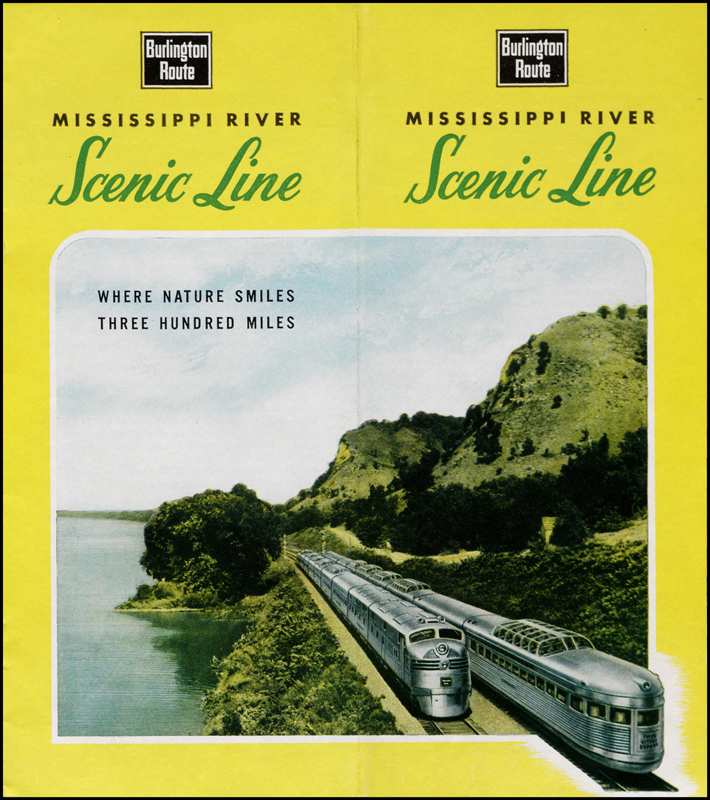
Burlington launches America's first vista-dome passenger carriages.
World War Two comes to an end, with Japan signing documents of surrender on 2 September 1945.
The first major motion picture filmed entirely in a hotel and outside Hollywood's studios, 'Weekend at The Waldorf' featuring Ginger Rogers, grosses $4,366,000 and is ranked number seven at the box office.
'American Airlines, Inc' launches their trans-Atlantic division, American Overseas Airlines (AOA), running America's first European service.
Best Western Motels is founded by M. K. Guertin. The innovative concept begins as a referral system; an informal link between properties with each hotel recommending other establishments to travellers.
War time restrictions on flights come to an end.
The Aspen Skiing Corporation is founded in Apsen, Colorado and the city quickly develops into a well known ski resort.
American Hotel Association rates triple, with smaller hotels charging 50 cents a room, medium-sized hotels 75 cents and larger hotels $1 per room.
Westin Hotels debuts the first guest credit card.
Curtis Publishing Company begin 'Holiday' magazine to capitalise on America's new love of vacation travel.
Heathrow becomes the new civil airport in London, replacing the old grass airfield at Croydon. The site of the airfield, chosen after the government requisitioned land around the ancient village of Heath Row, had been used by the RAF during the war. 63,000 passengers pass through the airport in its inaugural year.
Hilton Hotels Corporation is formed.
Intercontinental Hotel Corporation is formed. To bolster international air travel and encourage tourism in Latin America, President Roosevelt and former President of Pan American Airways agree to create a government funded subsidiary of Pan Am that would build luxury hotels. The first of these hotels opened in Belém, Brazil in 1947.
Fred Pontin opens his first camp at Brean Sands near Burnham-on-Sea. The first years profit is a healthy £17,000 and the company is floated on the London Stock Exchange. By 1949, Pontin is operating six camps in the UK.
New York City's Roosevelt Hilton becomes the first hotel in the world to install televisions in guest rooms.
Sheraton Corporation of America becomes the first hotel chain to be listed on the New York Stock Exchange.
Plymouth Plantation, a Living History Museum, is opened in Plymouth, Massachusetts. It features a recreation of an early Plymouth settlement and an American Indian homesite.
Edward Land demonstrates his first Instant Camera to stunned audiences at the Optical Society of America on the 21st February
The National Council for Historic Sites and Buildings is established in the US to support the preservation of historic sites.
The first television broadcast in 625-line standard occurs in Moscow.
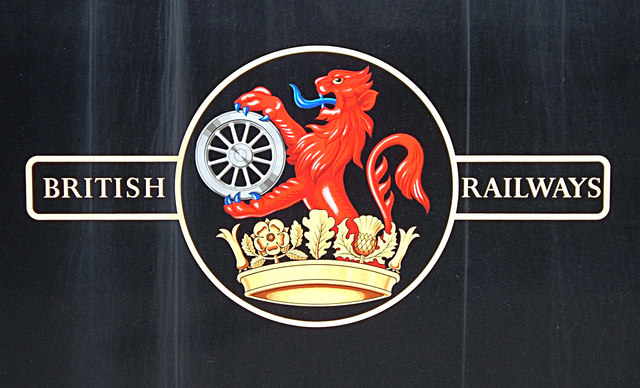
The railways become nationalised in Britain with the formation of British Railways.
Thomas Cook & Son Ltd is nationalised alongside the railways and becomes part of the British Transport Commission.
The first Instant Camera, designed by Edward Land, is sold for $87.95 at a department store in Boston.
American Airlines introduces both the Family Fare Plan, enabling families to travel together at reduced rates and a scheduled coach service as an economical alternative to first class travel.
The National Trust for Historic Preservation is established in the US at the request of the founders of the National Council for Historic Sites and Buildings. It acts to take ownership of historic sites and buildings to ensure their preservation.
Middleton Tower Holiday Camp near Morecambe gets a full makeover. It now looks like an ocean liner on land and can accommodate 3,000 visitors; a number rivalling Butlins.
Conrad Hilton buys the Waldorf Astoria, New York.
Hilton International is born with the opening of the Caribe Hilton in Puerto Rico. Legendary barman Ramon "Monchito" Marrero creates the Pina Colada here.
Black and white television sets are placed in hotel lobbies and other public places across the US.
The American Hotel Association create their first universal credit card. This eventually becomes the American Express card.
The first hotel 'chain' opens in California and the TraveLodge is born.